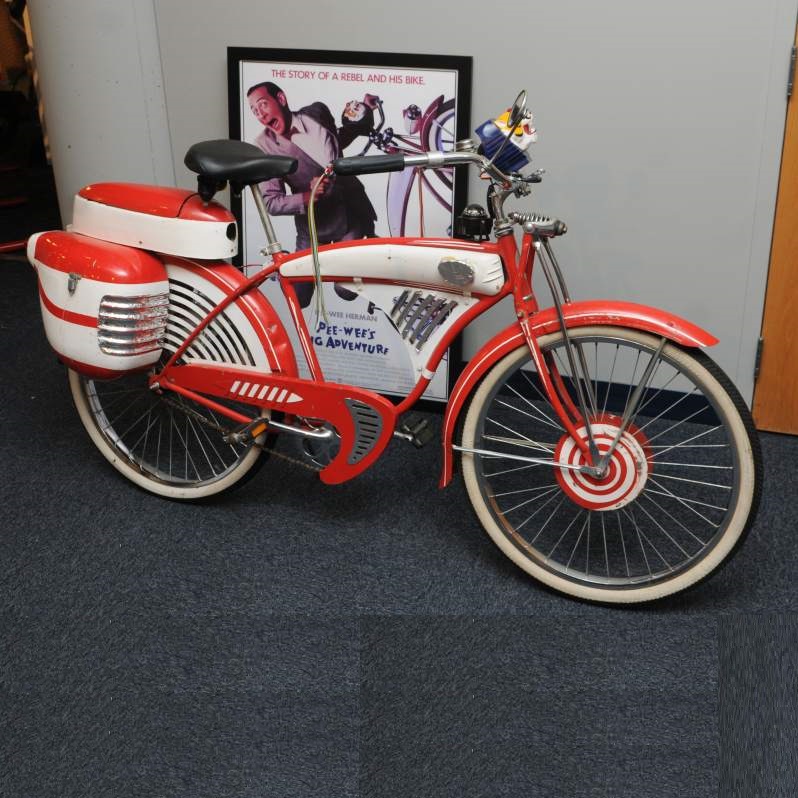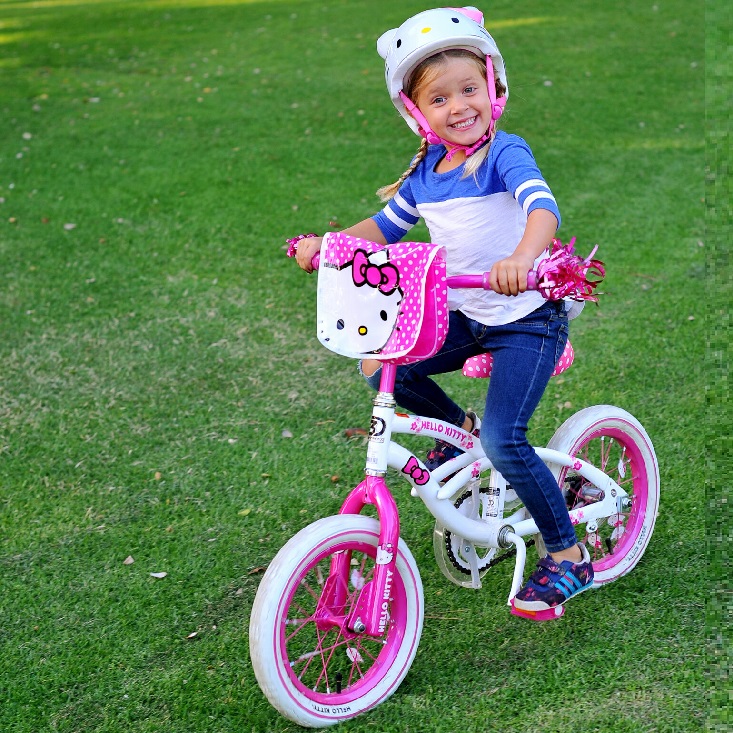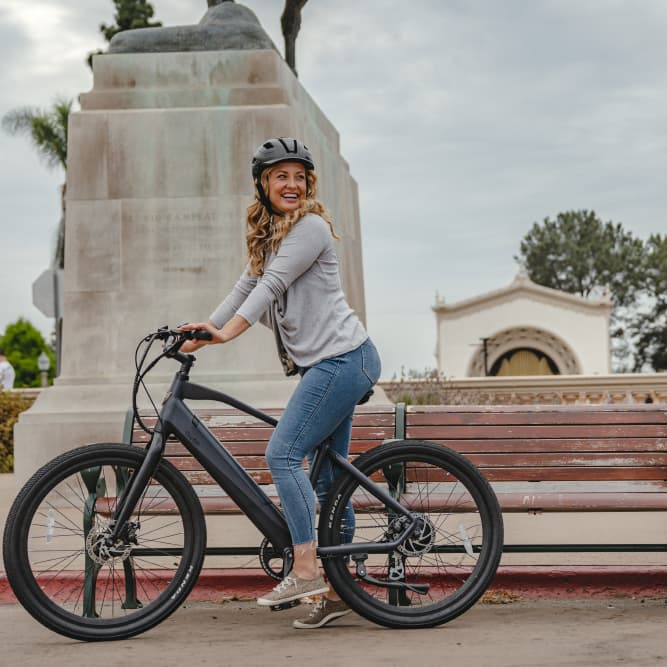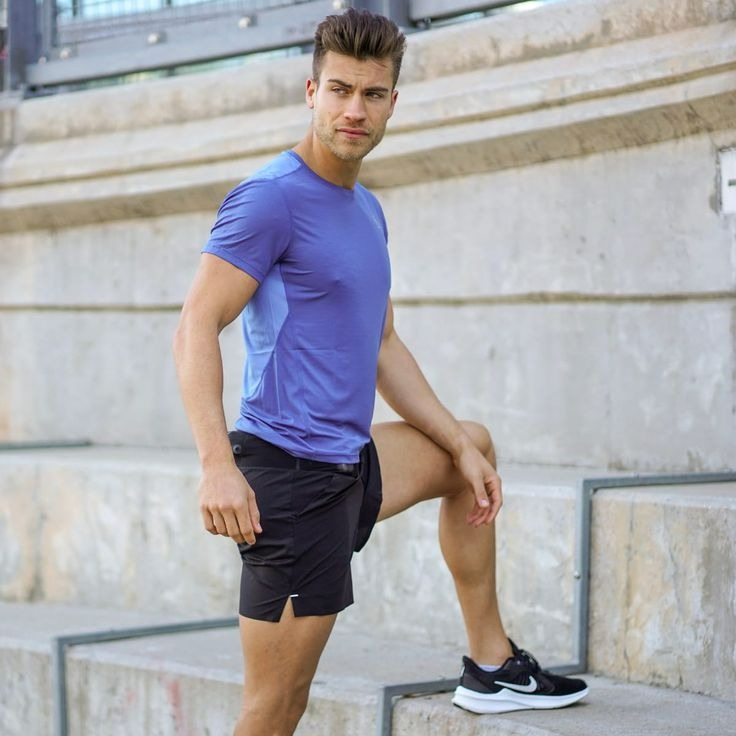Choosing the Right Bike
Let’s explore the key points to keep in mind when you learn the stuff about how to ride a bicycle. First, choosing the right bike is critical for a comfortable and safe riding experience.
Key Considerations for Selecting a Suitable Bicycle
When picking out a bike, consider these essential factors:
- Purpose: Determine whether the bike is for commuting, racing, mountain biking, or casual rides.
- Size: Make sure the bike frame matches your body size for comfort and control.
- Budget: Establish how much you can spend. There’s a wide range of prices.
- Material: Frame materials include aluminum, steel, carbon fiber, and titanium, each offering different benefits.
- Wheel size: Larger wheels roll faster but smaller ones may maneuver better.
- Suspension: Decide if you need suspension, which is helpful for off-road cycling.
The Importance of Proper Bike Fit
A proper bike fit is not just about comfort; it affects your ability to handle the bike efficiently and avoid injuries. Here’s why fit matters:
- Seat height: Adjust so your legs have a slight bend when pedaling.
- Reach to handlebars: You should be able to reach the handlebars without straining.
- Standover height: Ensure there’s space between you and the top tube when you’re standing.
- Saddle position: The saddle should support your weight without causing discomfort.
By focusing on these aspects, you’ll choose a bike that feels like an extension of your body, making bike riding a joy rather than a chore.

Essential Gear and Accessories
Equipping yourself with the right gear and accessories is crucial for a safe and enjoyable bike riding experience. Ensuring that you have the essential items will not only protect you but also enhance your riding proficiency. Let’s delve into the key gear and accessories you should consider.
Safety Gear: Helmets and Pads
Before you start pedaling, prioritize your safety with the right gear:
- Helmets: Choose a well-fitting helmet to protect your head during falls.
- Pads: Consider knee and elbow pads, especially for off-road biking or learning.
- Gloves: Wear gloves to improve grip and protect your hands.
- Reflective clothing: Increase visibility with reflective wear or vests, especially at night.
These items safeguard you from injuries and increase your visibility to other road users.
Finding your way while biking is important, whether in the city or on trails:
- GPS device: Use a GPS for real-time directions and tracking your route.
- Maps: Carry a physical map as a backup or for areas without GPS signal.
- Smartphone apps: Install bike navigation apps that offer route suggestions and fitness tracking.
By using these navigational tools, you can explore new areas without getting lost and track your cycling progress. Remember, safety comes first, so never manipulate devices while riding; instead, stop safely if you need to check your location or route.
Basic Bike Riding Skills
Learning basic bike riding skills is essential for any beginner. This section will focus on understanding bike controls and mastering starting and stopping techniques. These foundational skills will not only boost your confidence but also ensure your safety on the bike.
Understanding Bike Controls
Familiarize yourself with your bike’s equipment:
- Handlebars: They steer the bike. Keep a firm grip.
- Brakes: Learn their location. Use them to slow or stop.
- Pedals: They propel the bike forward. Know how to operate them smoothly.
Get to know these controls in a static position first. Practice using them gently to build muscle memory.
Starting and Stopping Techniques
Effective starting and stopping are critical for safe bike riding. Here are steps to follow:
- Starting:
- Sit on the bike. Adjust your seat if needed.
- Place one foot on the ground to stabilize.
- Push off gently and place both feet on the pedals.
- Start pedaling to gain momentum.
- Stopping:
- Slowly press the brakes evenly. Don’t jerk them.
- Keep the handlebars straight to maintain balance.
- Come to a complete stop and place one foot on the ground to stabilize.
Master these techniques in an open, flat area before taking on more challenging environments. Practice frequently to become confident in your bike riding abilities.

Mastering Balance and Pedaling
Mastering the art of balance is a key step in learning how to ride a bicycle. Once you’ve chosen the right bike and geared up, it’s time to focus on feeling stable and moving forward. Balance is the foundation upon which all other biking skills are built.
Techniques for Balancing on Two Wheels
Learning to balance on two wheels requires patience and practice. Begin by:
- Finding a level, open space: A quiet park or empty parking lot works well.
- Walking alongside the bike: Grip the handlebars, walk, and use the bike as support.
- Scooting: Sit on the bike and push off with your feet, lifting them slightly to feel the balance.
- Practicing gliding: With feet off the ground, extend the glide as long as comfortable.
- Keeping eyes forward: Look ahead, not down, to help with balance.
Maintaining focus and a relaxed posture helps with balancing. Practice these steps until you feel more stable on the bike.
Progressing from Scooting to Pedal Riding
Once you’re comfortable balancing, it’s time to transition to pedaling:
- Starting: Push off strongly and place one foot on a pedal.
- Finding the ‘ready position’: Position pedals so one is slightly higher for an easier start.
- Smooth pedaling: Turn the pedals in a fluid motion.
- Stopping: Use both brakes to come to a safe, controlled stop.
Transitioning from scooting to pedaling might feel tricky at first. Keep practicing, and soon, pedaling will become a natural part of your bike riding experience.
Using Gears and Brakes Effectively
Learning to use gears and brakes effectively can enhance your cycling experience significantly. This section will guide you on how to shift gears smoothly and the right way to utilize brakes to ensure a safe riding experience.
How to Shift Gears Smoothly
Shifting gears efficiently helps maintain momentum and reduces strain on the bike:
- Start in a Lower Gear: Begin your ride in a lower gear, which is easier to pedal.
- Listen to Your Bike: Change gears when you feel the pedaling becomes too easy or hard.
- Use the Right Shifter: Right shifters usually control rear gears, left shifters for front gears.
- Shift While Pedaling: Always pedal lightly when you shift to avoid damaging the gears.
Smooth gear shifting enhances your bike’s performance and your comfort.
The Right Way to Use Brakes
Understanding how to apply your brakes correctly is crucial for safe cycling:
- Use Both Brakes: Always use both the front and rear brakes together to stop evenly.
- Apply Gently: Apply your brakes gently to avoid sudden stops that can lead to falls.
- Brake Early: Start braking well before you need to stop, especially in wet or slippery conditions.
- Keep Brakes Maintained: Check your brakes regularly to ensure they are in good working order.
By mastering these techniques, you will enjoy more controlled and confident rides on various terrains.

Riding on Different Terrains
Tips for Urban Cycling
Navigating city traffic requires focus and an understanding of how to ride a bicycle safely. Here are some tips:
- Plan your route: Before you head out, decide which streets to take. Look for bike lanes or quieter streets.
- Stay visible: Wear bright clothing and use lights, even during the day.
- Signal clearly: Always use hand signals to indicate your turns to other road users.
- Be alert: Watch for cars, buses, and pedestrians. Anticipate their actions to avoid accidents.
- Follow traffic rules: Obey traffic lights and signs. Ride in the direction of traffic.
Urban cycling can be enjoyable and quick. With these tips, you can ride confidently and safely through city streets.
Handling Rough Outdoor Trails
Biking on rough terrains is thrilling but challenging. Follow these strategies:
- Choose the right bike: A mountain bike is best for trails. It provides stability and control.
- Inspect the trail first: Look at the trail’s condition before biking. Avoid paths with too much debris or large obstacles.
- Adjust your riding style: Reduce your speed and use the gears efficiently to manage steep or uneven paths.
- Stay focused: Always look ahead to anticipate changes in the trail. This helps in maintaining balance.
- Learn to brake properly: Use both brakes gently but firmly to control speed without skidding.
These tips help you tackle outdoor trails with confidence. Enjoy the natural scenery and the joy of rough-terrain cycling.
Bike Maintenance 101
Keeping your bike in good shape enriches your riding experience and ensures its longevity. Let’s discuss the essentials of bike maintenance that every cyclist should be familiar with.
Routine Bike Check-up and Care
Regular check-ups keep your bike functioning smoothly. Here’s a simple routine to follow:
- Inspect your bike: Before each ride, check for loose parts and wear.
- Tire pressure: Ensure tires are inflated to the recommended level for a smoother ride.
- Brake pads: Look for signs of wear and replace them if they’re thin or damaged.
- Chain lubrication: Clean and lubricate your chain regularly to prevent rust and reduce friction.
- Clean your bike: Wipe off dirt and grime after rides, especially from moving parts.
Adhering to this maintenance routine can prevent most issues and prolong your bike’s performance.
When to Seek Professional Maintenance Services
Sometimes, a professional’s touch is needed. Here are signs that it’s time to visit a bike shop:
- Strange noises: Clicking, creaking, or grinding sounds often indicate a problem.
- Gear issues: If shifting gears becomes difficult even after adjusting, seek professional help.
- Breakdowns: After a breakdown, a thorough check by a professional is wise.
- Annual check-up: Regardless of apparent issues, get a yearly service to keep everything in top condition.
Professional maintenance services can solve complex problems and give you peace of mind while riding your bike.
Enhancing Your Riding Experience
Once you master basic riding skills, you may wish to enhance your biking joy. Engaging with others and discovering new places can do just that.
Joining Cycling Groups and Communities
Joining a cycling group helps improve skills and social connections. Here’s how it enhances your ride:
- Learning Opportunities: More experienced riders can offer tips and technique improvements.
- Motivation and Support: Cycling with others can boost your enthusiasm and commitment to cycling.
- Safety in Numbers: Riding in a group makes you more visible on the road, enhancing safety.
- Social Events: Many groups hold social events, combining fitness with fun.
Start by asking your local bike shop about nearby groups or searching social media for cycling communities.
Exploring New Trails and Routes
Discovering new biking trails offers fresh scenery and challenging rides. Consider these tips:
- Research: Use apps and websites that list biking routes by difficulty and scenery.
- Ask Locals: Speak to other cyclists and shop staff for recommended spots.
- Start Small: Try shorter routes first to gauge difficulty.
- Prepare Adequately: Ensure your bike is in good condition and take necessary gear.
Exploring broadens your horizons and ingrains a deeper love for cycling.

